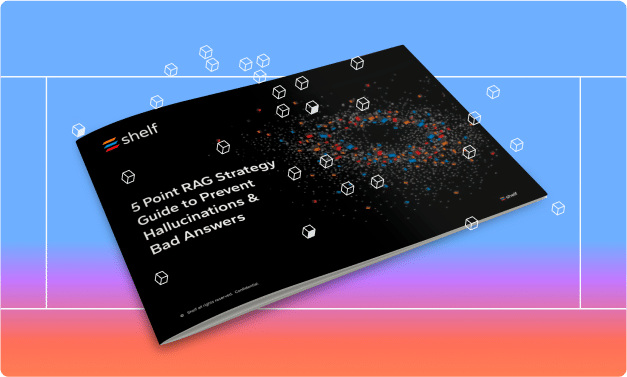The terms “data science” and “data analytics” are often used interchangeably, but they represent distinct fields with different goals, processes, and skill sets. Understanding the differences between these two disciplines is crucial for professionals who work with data, as well as for organizations looking to leverage data for strategic advantage.
This article will explore the nuances of data science vs. data analytics, compare their roles and processes, and help you determine which path might be right for you or your organization.
What is Data Science?
Data science is a multidisciplinary field that combines various techniques from statistics, computer science, and domain knowledge to extract insights and knowledge from data.
As data becomes increasingly central to decision-making, data science plays a crucial role in helping you understand patterns, make predictions, and drive informed business strategies. It’s not just about analyzing data but also about using advanced tools and algorithms to create statistical models that can predict future outcomes and uncover hidden trends.
Data Science Process
The data science process is a structured approach that guides you through solving complex problems with data. Here’s how it typically unfolds:
- Define the Problem: Start by clearly defining the question you need to answer or the problem you need to solve.
- Collect Data: Gather the necessary data from various sources. This could include structured data from databases, unstructured data like text or images, and even real-time data from sensors.
- Data Cleaning: Cleaning data involves removing duplicates, handling missing values, and correcting errors to ensure the data is accurate and ready for analysis.
- Exploratory Data Analysis (EDA): Explore the data to identify patterns, trends, and relationships. EDA helps you understand the data’s structure and the variables that might influence the outcome.
- Modeling: Build predictive models using techniques like machine learning or statistical analysis. These models help you make decisions based on the data.
- Validation: Test the model to ensure it accurately predicts outcomes on new data. This step is crucial for confirming the reliability of your model.
- Deployment and Monitoring: Implement the model in a production environment where it can be used to make decisions. Continuous monitoring is needed to ensure the model remains accurate over time.
Data Scientist Role
As a data scientist, your role is to transform raw data into actionable insights. You do this by applying advanced analytical techniques, developing predictive models, and communicating findings in a way that’s accessible to non-technical stakeholders.
The role is highly collaborative, often requiring you to work with data engineers, business analysts, and decision-makers to ensure that the insights you generate align with organizational or career goals.
Data Scientist Skills
To excel as a data scientist, you need a combination of technical and analytical skills:
- Programming Skills: Proficiency in programming languages like Python, R, and SQL is essential for data manipulation, analysis, and modeling.
- Statistics and Mathematics: A strong foundation in statistics and mathematics is crucial for building models and interpreting data.
- Machine Learning: Understanding and applying machine learning algorithms allows you to create predictive models that can automatically improve over time.
- Data Wrangling: The ability to clean, transform, and merge datasets from different sources is key to preparing data for analysis.
- Data Visualization Software: Skills in tools like Tableau, Power BI, or Matplotlib help you present data in a clear and visually compelling way.
- Domain Knowledge: Understanding the industry or field you’re working in allows you to apply data science techniques in a relevant and impactful way.
- Communication: The ability to explain complex data science concepts and findings to non-technical stakeholders is vital for ensuring that your insights lead to informed decisions.
A Day in the Life of a Data Scientist
A typical day for a data scientist involves a mix of analysis, collaboration, and problem-solving.
Morning: You start the day by checking the performance of your deployed models. This might involve analyzing logs, reviewing accuracy metrics, and addressing any issues that arise. Next, you attend a team meeting where you discuss ongoing projects, share insights, and align on priorities with data engineers and business stakeholders.
Midday: You dive into data exploration, perhaps working on a new dataset that has just been provided. Using tools like Python and Jupyter Notebooks, you perform exploratory data analysis to identify trends or anomalies. You might also spend time cleaning and transforming the data to prepare it for modeling.
Afternoon: After lunch, you focus on building or refining a predictive model. This involves selecting the right algorithms, tuning hyperparameters, and validating the model’s performance. Once satisfied, you may present your findings to stakeholders, using visualization tools to make complex insights understandable.
End of Day: The day wraps up with documentation and planning. You document your work, ensuring that your code and analysis are reproducible. You also plan for the next day, setting goals and identifying any data or resources you’ll need to move forward.
In this role, you continually balance technical tasks with strategic thinking, making data science a dynamic and rewarding field.
What is Data Analytics?
Data analytics is the process of examining existing data sets to draw conclusions and make informed decisions. It involves using statistical techniques, algorithms, and tools to interpret data and uncover patterns, correlations, and trends.
While data science focuses on creating models and making predictions, data analytics is more about answering specific questions and making data-driven decisions based on historical data.
Data analytics is a critical function in any organization that relies on data to optimize processes, understand customer behavior, or improve product development and services.
Data Analytics Process
The data analytics process is systematic and involves several key steps that help you extract meaningful insights from data. Here’s an overview of how it typically works:
- Data Collection: The first step is to gather data from various sources such as databases, surveys, sensors, or other data repositories. The quality of your analysis depends heavily on the accuracy and relevance of the data collected.
- Data Cleaning: Before analysis, you must clean the data to remove any errors, duplicates, or inconsistencies. This step ensures that your analysis is based on reliable and accurate data.
- Data Analysis: Once the data is cleaned, you apply statistical techniques and tools to analyze the data. This could involve anything from simple descriptive statistics to complex algorithms, depending on the goals of the analysis.
- Data Interpretation: After analysis, you interpret the results to draw conclusions. This might involve identifying trends, correlations, or outliers that can inform business decisions.
- Data Visualization: To communicate your findings, you create visualizations that make the data easy to understand. Tools like charts, graphs, and dashboards help convey insights to stakeholders in a clear and actionable way.
- Reporting: The final step is to compile your findings into a report or presentation, highlighting key insights and recommendations. This helps decision-makers understand the implications of the data and take appropriate action.
The Types of Data Analytics
Data analytics can be divided into four main types, each serving a different purpose in understanding and utilizing data.

Predictive Analytics
Predictive analytics involves using historical data to make predictions about future outcomes. By analyzing patterns and trends, you can forecast events such as customer behavior, market trends, or potential risks. Common applications include sales forecasting, risk management, and customer churn prediction.
Prescriptive Analytics
Prescriptive analytics goes a step further by not only predicting future outcomes but also recommending actions to achieve desired results. It uses optimization techniques to suggest the best course of action in a given situation. This type of analytics is often used in supply chain management, pricing strategies, and resource allocation.
Diagnostic Analytics
Diagnostic analytics helps you understand why something happened. By examining data from multiple sources and identifying correlations, you can uncover the root causes of past events. It’s commonly used in quality control, financial analysis, and customer feedback analysis to determine the reasons behind certain outcomes.
Descriptive Analytics
Descriptive analytics provides an overview of what has happened in the past. It’s about summarizing historical data to identify patterns or trends that can inform future decisions. This is often used in reporting, performance metrics, and market analysis to understand past performance and trends.
Data Analyst Role
As a data analyst, your primary role is to examine data and draw actionable insights that help drive business decisions. You’re responsible for collecting, processing, and analyzing data to identify trends or patterns that can impact the organization. You often work closely with business leaders, marketers, and other stakeholders to ensure that the insights you provide are aligned with the company’s objectives.
Data Analyst Skills
To succeed as a data analyst, you need a blend of technical skills and analytical skills, including:
- Data Analysis: Proficiency in statistical analysis and the ability to use tools like Excel, R, or Python to interpret data.
- Data Management: Knowledge of databases and data management systems such as SQL to efficiently store and retrieve data.
- Data Visualization: Skills in creating visual representations of data using tools like Tableau, Power BI, or Excel.
- Critical Thinking: The ability to critically assess data, identify trends, and understand the implications of your findings.
- Attention to Detail: Ensuring data accuracy and reliability is crucial, so attention to detail is key.
- Communication: The ability to translate complex data insights into clear, actionable recommendations for non-technical stakeholders.
A Day in the Life of a Data Analyst
A typical day for a data analyst involves a mix of data exploration, reporting, and collaboration. Here’s what your day might look like:
Morning: You start the day by reviewing data from various sources, checking for any discrepancies, and preparing datasets for analysis. You might also attend a team meeting to discuss ongoing projects and align on priorities with business stakeholders.
Midday: You dive into data analysis, using tools like Excel or SQL to explore datasets and identify trends. You might be working on a report that highlights key metrics for a marketing campaign or analyzing sales data to provide insights into customer behavior.
Afternoon: After lunch, you focus on creating visualizations and compiling your findings into a report. You use tools like Tableau or Power BI to create dashboards that make the data easy to understand. You might also present your findings to stakeholders, discussing the implications and recommendations.
End of Day: The day ends with documentation and planning. You document your analysis, ensuring that your work is reproducible and accessible to others. You also plan for the next day, setting goals and preparing any data or resources you’ll need.
In this role, you continually work to uncover insights from data, making it a critical function in helping organizations make informed decisions.
Comparing Data Science vs. Data Analytics
Data science and data analytics are closely related fields, but they differ in scope, techniques, and objectives. Below is a comparison that highlights the key differences and similarities.
| Aspect | Data Science | Data Analytics |
| Objective | To create models, predict future outcomes, and generate insights for strategic decisions. | To analyze existing data to answer specific questions and make data-driven decisions. |
| Scope | Broad, involving the entire data lifecycle from data collection to model deployment. | Focused on analyzing and interpreting existing data to inform decision-making. |
| Process | Define problem Collect data Data cleaning Exploratory Data Analysis (EDA) Modeling Validation Deployment and monitoring | Data collection Data cleaning Data analysis Data interpretation Data visualization Reporting |
| Techniques Used | Machine learning Statistical modeling Predictive analytics Big data processing | Descriptive statistics Diagnostic analytics Predictive analytics Data visualization |
| Tools and Technologies | Python, R, SQL Hadoop, Spark TensorFlow, PyTorch Jupyter Notebooks | Excel, SQL Tableau, Power BI R, Python Data management systems (e.g., SQL databases) |
| Typical Outputs | Predictive models Data-driven insights Automated decision systems | Reports Dashboards Trend analyses Summary statistics |
| Skillset | Programming (Python, R, SQL) Machine learning Data wrangling Data visualization Statistics and mathematics Communication | Data analysis Data management Data visualization Statistical analysis Communication |
| Role Focus | Strategic and exploratory, often involving the creation of new methods or models. | Operational and tactical, focusing on interpreting data to improve business outcomes. |
| Industry Application | AI and machine learning Big data projects Research and development | Business intelligence Marketing analysis Financial reporting Operational efficiency |
| Typical Roles | Data Scientist Machine Learning Engineer Data Engineer Research Scientist | Data Analyst Business Analyst Operations Analyst Financial Analyst |
FAQs About Data Science vs. Data Analytics
Here are some common questions people ask about data science vs. data analytics.
Which is better: data analyst or data scientist?
Neither role is better as they serve different purposes. A data scientist focuses on predictive modeling and strategic insights, while a data analyst interprets data for specific questions. Choose based on your interests—problem-solving with advanced models (data science) or analyzing existing data for decisions (data analytics).
Can a data analyst become a data scientist?
Yes, a data analyst can transition to a data scientist by learning advanced technical skills such as machine learning, programming, and statistical modeling (the soft skills carry over). Building expertise in Python, R, and big data tools is essential. Many data scientists start as data analysts and upskill over time.
Do data analysts make more than data scientists?
Typically, data scientists earn more than data analysts due to the advanced skills required and the strategic nature of their role. Salaries vary based on experience, industry, and location, but the average salary for data science roles is generally higher.
Will AI replace data analysts?
Artificial intelligence works as a copilot for data analysts, but it won’t fully replace them. Analysts will still be needed to interpret AI-generated insights, ensure data quality, and make informed decisions based on the context that AI might miss. Furthermore, AI can’t be held responsible for its output, so oversight is necessary.
What should I learn first: data analytics or data science?
Start with data analytics if you’re new to the field. It provides a foundation in data handling, statistical analysis, and basic tools like Excel and SQL. Once comfortable, you can advance to data science, which involves more complex techniques like machine learning and predictive modeling.
Is data science harder than data analytics?
Data science is generally more complex because it involves advanced programming, machine learning, and predictive modeling. Data analytics focuses on interpreting existing data, which requires a strong understanding of statistics and visualization but is typically less technically demanding than data science.
Which career trajectory has more opportunities: data science or data analytics?
Both fields offer a strong career path, but data science tends to have a broader scope and more varied roles, particularly in industries like tech, finance, and healthcare. Data analytics is in demand across all sectors, especially in business intelligence and operations.
How long does it take to become a data scientist?
Becoming a data scientist can take many years of education and experience. A strong foundation in mathematics, statistics, and programming is essential, often requiring an advanced degree in a related field plus additional training or work experience in data analysis and machine learning.
The Right Discipline for Your Needs
Data science and data analytics are both essential to extracting value from data, but they serve different purposes and require different skills. Whether you’re interested in predicting future trends with advanced models or analyzing existing data to drive decisions, understanding the distinctions between these fields will help you make informed choices in your career trajectory or business strategy.




